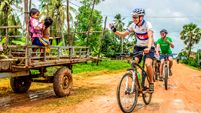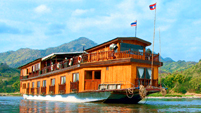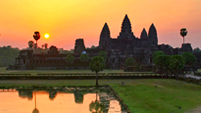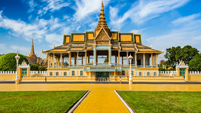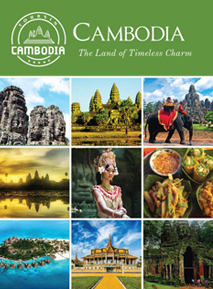Quick Facts:
- Address: Samdech Sothearos Blvd Central Phnom Penh
- Price: Free
- Opening Hours: 06:00-18:00
Once coming to Phnom Penh, Cambodia, you must visit Wat Ounalom, the headquarter of the Cambodian Buddhist patriarchate. A visit to Wat Ounalom allows insight into philosophies, the spiritual teachings, and history of Buddhism in Cambodia. Perhaps functioning as the most prominent and oldest of five pagodas in the country, Wat Ounalom is the major house of Cambodian Buddhism and serves as the abode of the Patriarch of the Mahanikai School of Buddhism.
The shrine was built in 1443 and it was once home to more than 500 monks as well as the Buddhist Institute’s library that held in its collection over 30,000 titles. As the name indicates, King Ponhea Yat or ‘Eyebrow Temple’ - was to enshrine an eyebrow hair (ounalom) of Lord Buddha. However, from 1975 to 1979, Wat Ounalom was seriously damaged in terms of valuable cultural artifacts and book collection by the Khmer Rouge. In addition, the Khmer took away the lives of the majority of monks who lived there during these days. However, Buddha’s eyebrow miraculously survived and is still the main point of the Wat. Later, Wat Ounalom contemporary housed the Buddhist Institute, before it shifted to a much larger area on the Sihanouk Boulevard in 1999.
As for the structure, Wat Ounalom is a complex with 44 buildings. The main temple, which is erected in 1952, is the modern version of the original shrine in the 15th century. It is spread over three levels and contains an interesting collection of wonderful paintings and cultural relics that bring light to the life of the Lord Buddha. Behind the main temple is Chetdai – a 500-year-old stupa, where Lord Buddha’s eyebrow hair has been preserved. During the Angkorian era, this stupa was also outstanding for its four bronze images of Buddha in sitting style, each of which faces a basic direction. In addition, visitors can find several figures of Hindu gods bounding the walls. Among them, the most significant is the figures of Garuda, Lord Vishnu the fairy-tale bird, and Lord Yama on his buffalo.
Another highlight of Wat Ounalom is the image of Samdech Huot Ta, which is placed at the main temple’s northeast corner. This is the fourth Buddhist patriarch who was put to death under the Pol Pot era. Furthermore, to the north of the main temple, people can find the monastery of the Supreme Patriarch. Above all, the serene, natural surroundings of this Wat are as endearing as its collections and features.




